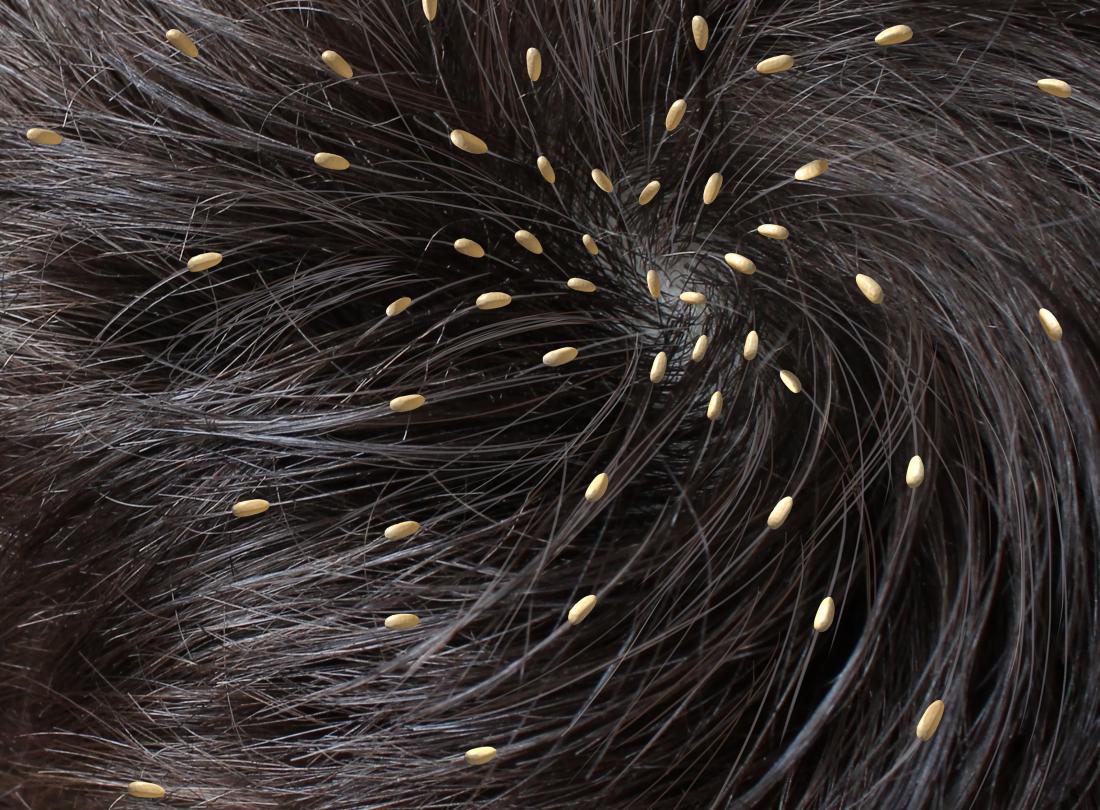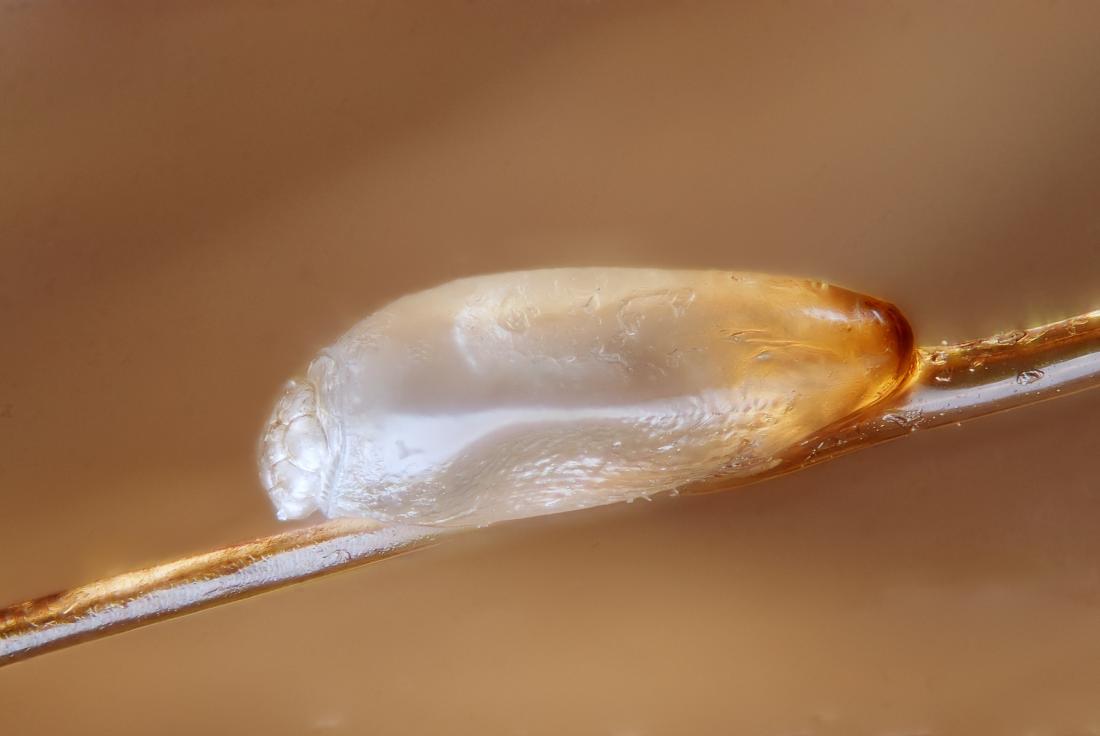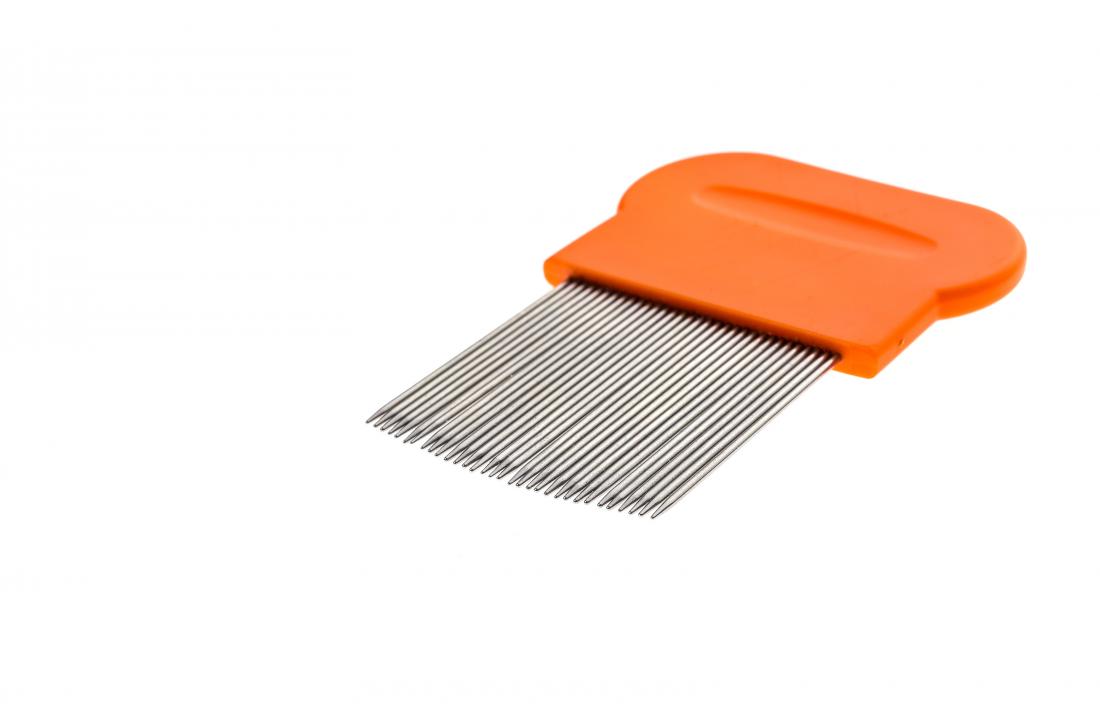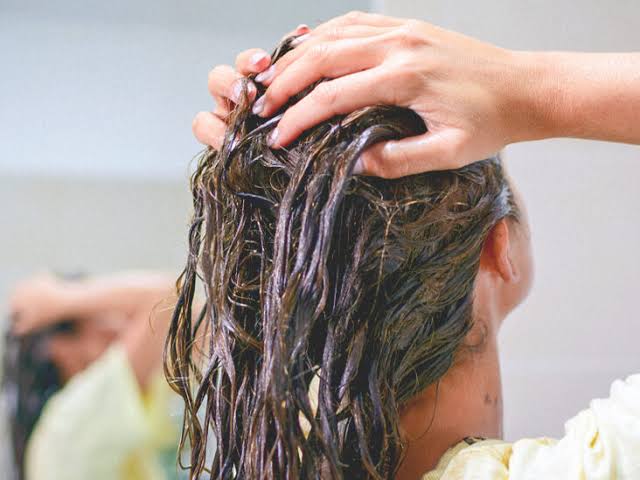Head lice are tiny, wingless parasitic insects that reside in human hair and feed on the blood of the host. They are a frequent condition, and they are also quite contagious. They can also be quite difficult to get rid of. Nits are the eggs that are laid.
Head lice are not a health danger, nor are they a symptom of inadequate cleanliness, nor are they a source of illness. They are widespread among children in preschool and primary school, and they have the potential to spread to the rest of the family.
Adult head lice are roughly one-eighth of an inch long and about the size of a sesame seed, and they can live for up to 30 days in the human scalp. It is estimated that head lice can survive for around 1 to 2 days away from the host. Female head lice are larger than male head lice and have the ability to lay approximately 8 eggs per day. If lice are found in darker hair, they will look darker in colour.
While feeding, a louse injects saliva into the host in order to prevent blood clots from forming. The host may experience irritation and allergic reactions as a result of this. Scratching an inflamed area of skin might result in a secondary bacterial infection of the skin. Aside from that, head lice do not spread disease and are not detrimental to one’s health.
Head lice, also known as nits, are commonly found near the neckline, at the back of the head, and behind the ears of children. They may also form on the lashes or brows in a less usual occurrence.
Every year in the United States, it is estimated that between 6 to 12 million infestations occur among children aged three to eleven years.
Important information to know about head lice
- Head lice are small insects that live on the scalp and are most commonly found on children under the age of ten.
- They can travel quickly between hairs, at a rate of 9 inches per minute, however they are unable to fly or jump due to their lack of flight ability.
- The lice require human blood to exist, and if they are separated from their host for more than two days, they will starve to death.
- In most cases, head lice are acquired directly from another person through direct head-to-head contact (contagion). Pets do not play a role.
- Although over-the-counter (OTC) and prescription medications are used to treat the condition, resistance to these medications is increasing with time.
Symptoms

Among the signs and symptoms of an infestation, itching is the most prevalent.
There has been an allergic reaction to louse saliva as a result of this. Luse bites can cause severe itching in certain persons who are very sensitive to them. Others are not sensitive to the saliva, or they develop a tolerance to it and have little or no itching, even after being infected repeatedly with the pest.
Some people do not experience itching for the first 2 to 6 weeks after an infestation since it can take up to 6 weeks for the body to become sensitised to the stinging insects.
As a result, the infestation may go undiscovered for some time.
Other signs and symptoms to look out for are:
- tickling or a sensation of something moving in the hair
- irritability and difficulty sleeping
- sores on the head from scratching
- swollen lymph nodes, or glands
- pink eye
Home treatment

There are a few things that can be done to treat a head lice infestation before you start taking any prescription medications.
Wet-combing
Using a fine-toothed nit comb to comb through wet hair may help to eradicate lice and some nits. The efficiency of this strategy has not been proven conclusively, according to the research.
In addition to damp hair, something to lubricate the hair, such as a hair conditioner, should be used to condition the hair.
During a session, comb the entire head, from the scalp to the ends of the hair, at least twice more than usual. It is recommended that this procedure be performed every 3 to 4 days for at least 2 weeks after no additional lice are discovered.
Essential oils
It has been shown in a few small clinical investigations that certain natural plant oils may have a harmful effect on lice and their eggs. These products are as follows:
- tea tree oil
- anise oil
- ylang-ylang oil
- nerolidol, a chemical compound found in many plant oils
- eucalyptus oil
- lavender oil
In one study, it was discovered that a spray with a combination of coconut and anise was substantially more successful at clearing head lice than a permethrin lotion at removing the parasites.
One advantage of using coconut oil and anise is that the effects are physical rather than neurological, making it extremely unlikely that the lice would build a resistance to the treatment. The therapy causes the lice’s waxy outer shell to dry out, resulting in their death through dehydration.
Neither the safety nor the effectiveness of any essential oils for head lice treatment have been proven by the Food and Drug Administration (FDA) of the United States.
Should my child stay off school?
Because of lice, a youngster should not be kept at home. Some schools have had “no-nit” policies under which a child was not allowed to return to school until all nits were removed. No-nit policies are strongly discouraged by the American Academy of Pediatrics and the National Association of School Nurses.
Although children should keep their hats on separate hooks from other children at school, they should not share combs, brushes, or headgear unless it is protective headgear, such as a cycle helmet in situations where they would otherwise be forced to go without it.
What about my child’s clothes?
If you have a head lice infestation, you do not need to throw away your hats, blankets, or other personal belongings. It should be sufficient to wash items that were used within the previous two days before the infestation was discovered. Make use of hot water and a high-temperature dryer. Items that cannot be washed can be dried cleaned or sealed in a plastic bag for up to 2 weeks.
What if they don’t go away?
Most of the time, head lice usually get eliminated at home. If your child or someone else in your household still has head lice after a few weeks, this indicates that the treatments have failed and that a visit to a dermatologist should be scheduled immediately.
Pictures


lice on head 
Image credit: Giles San Martin. 
Treatment
Head lice treatments are available over-the-counter (OTC) in a variety of forms and strengths.
OTC medications containing 1 percent permethrin or pyrethrins can be successful, but in some aspects, the lice have formed a resistance to these products.
Here is a list of head lice medications that have been authorised by the Food and Drug Administration (FDA). Consult with a physician before initiating any treatment.
- permethrin cream (1%)
- pyrethrin-based product
- malathion lotion (0.5%)
- benzyl alcohol lotion (5%)
- spinosad topical suspension (0.9%)
- ivermectin lotion (0.5%)
These chemicals are referred to as pediculicides.
Chronic head lice
If the problem persists or recurs, parents should conduct regular checks and cure the lice as soon as possible using a lice treatment that is appropriate for the situation. Pediculicides kill lice and, in some cases, they can also kill the lice’s eggs, known as nits.
If the chosen product is ineffective against nits, it is recommended that you use it on a regular basis. Otherwise, retreatment is only indicated if live lice are discovered many days after treatment has been completed.
Female lice can begin laying eggs as soon as they hatch, which is nine days after they hatch. In order to disrupt the cycle and prevent the lice from spreading, the lice must be eliminated within 9 days of hatching or they will reproduce.
The most effective technique is to treat the lice after all of the eggs have hatched but before the new lice have grown to the point where they are able to lay eggs.
Following the application of the product, nit removal and wet combing should be performed as directed by the manufacturer, and the treatment should be reapply 7 to 10 days later, and if necessary, at day 18.
Head lice treatments approved by the FDA include over-the-counter and prescription medications such as Nix and Rid, which are available in the form of shampoo, creams, and lotions. Before using any product, it is critical to thoroughly inspect the label and follow all directions to ensure that the product is safe for the child and their age group in question.
When there is known resistance to an over-the-counter therapy, or when attempts to eliminate an infestation without medical assistance have failed, the kid should be taken to the doctor. A physician can prescribe medications such as spinosad or topical ivermectin to treat a child’s lice infestation.
The following prescription medications have been approved by the FDA:
- ulesfia
- natroba
- sklice
Permethrin cream (1 percent)
It is not necessary to obtain a prescription for permethrin cream (1 percent). When used on clean, towel-dry hair that has not been previously conditioned, it is rinsed out after 10 minutes with warm water.
Despite the fact that permethrin will not completely destroy all of the eggs at this stage, it will leave a residue on the hair that is intended to kill nymphs emerging from the 20 to 30% of living eggs that are still there.
It is necessary to repeat the application 7 to 10 days later if live lice are discovered. Most shampoos contain conditioners and silicone-based ingredients, which minimise the product’s lingering effect.
Pyrethrin-based products (shampoo or hair mousse)
Without a prescription, pyrethrin-based shampoo or hair mousse can be purchased over the counter. When applied to dry hair, it should be rinsed out after ten minutes. The use of pyrethroid insecticides, such as permethrin, should be avoided in those who are allergic to chrysanthemums and other related plants since they include components that are derived from the chrysanthemum.
After rinsing, there is no longer any residual pediculicidal activity. Furthermore, none of these natural pyrethrins is capable of totally killing the eggs, with 20 to 30% of the eggs remaining alive following treatment. In order to kill newly emerged nymphs produced from eggs that survived the initial treatment, a second treatment will be required. On the basis of the lice’s life cycle, it has been determined that day 9 is the most effective day for retreatment.
The resistance to pyrethrins and permethrins
Permethrin, pyrethrin, and other anti-louse drugs act by interfering with the louse’s nervous system’s ability to function.
Lice, on the other hand, can become resistant to this neurological action, and resistance to permethrin at a concentration of 1 percent has been recorded.
In some parts of North America, the effectiveness has dropped to 20 to 30 percent of the population.
Malathion lotion (0.5 percent)
Malathion lotion (0.5 percent) is only accessible with a doctor’s prescription. It should be applied to dry hair, allowed to dry, and then washed out after 8 to 12 hours, depending on the length of time.
It is effective at removing louse eggs from the environment. A single application is sufficient for the majority of patients, but if live lice are still visible after 7 to 9 days, the treatment should be repeated. It is appropriate for youngsters that are 6 years old or older.
Malathion is combustible and can cause chemical burns if it comes into contact with skin. After applying the product, allow the hair to air dry naturally. Do not use a hair dryer, curling iron, or flat iron on the hair while it is still wet.
It is critical that you do not smoke in the vicinity of a child who is receiving treatment with this medicine.
Benzyl alcohol lotion (5 percent)
Benzyl alcohol lotion (5 percent) is a prescription-only medication that is administered topically and kept on for 10 minutes before being removed. Due to the fact that it does not kill eggs, it must be repeated every 9-10 days. The product is only intended for newborns and children older than 6 months.
Despite the fact that it is non-neurotoxic, this treatment kills head lice through suffocation.
It has the potential to cause skin irritation.
Spinosad topical suspension (0.9 percent)
This is a prescription medication that is applied to dry hair and then washed out after 10 minutes, according to the instructions.
Lice become immobilised and eventually die as a result of this product, which is derived from a naturally occuring soil bacteria. It also contains benzyl alcohol, which is toxic.
It is safe and effective to use Spinosad to treat head lice, and the vast majority of people will be lice-free following a single treatment with it. It is not necessary to use a nit comb after treatment.
In children aged 6 months and older, Spinosad topical suspension has been licenced for usage; however, the safety of the medication has not been shown in children younger than 4 years of age.
Ivermectin lotion (0.5 percent)
Ivermectin lotion (0.5 percent) is a prescription-only lotion that is applied to dry hair and rinsed out after 10 minutes. It is not recommended for use on children.
Topical ivermectin 0.5 percent lotion kills head lice by raising chloride levels in muscle cells, causing them to contract and become paralysed.
This is a topical treatment that should only be used once and is suited for children aged 6 months and older. Any medication that has been left over must be thrown away, not re-used. Ivermectin has been shown to be lethal to some dog breeds, therefore it is recommended that it not be administered to domestic pets.
Steps for safe use of head lice products
Following are some guidelines for using head-lice products in a safe manner.
- To remove dead lice and nits after rinsing the product from the hair and scalp with a fine-toothed comb or special “nit comb,” follow the directions on the product label. Different products necessitate varying amounts of time before rinsing them.
- The product should be applied only to the scalp and the hair that is linked to the scalp; it should not be applied to other body hair.
- Before treating small children, consult with a doctor or pharmacist to determine the most appropriate course of action based on the child’s age and weight.
- Use medication exactly as stated on the label, and never more frequently than recommended unless otherwise directed by your healthcare professional or pharmacist.
- Treatments for children must be carried out under the direct supervision of an adult.
If head lice are discovered on one member of the family, all members of the household should be checked, and those who have live lice or nits within one-half-inch of the scalp should be treated immediately.
Diagnosis
When an infestation of adult lice is discovered in a healthy child, it is usually comprised of less than 20 mature lice.
Despite the fact that head lice are visible with the naked eye, they might be difficult to detect even after a thorough check. Nits can be readily confused with other things such as dandruff, hair spray droplets, or soil particles, among other things.
As a result, misdiagnosis is rather common in the medical field. Nits can remain adhered to the hair for a lengthy period of time after the live lice have been eliminated. After a live infestation has been properly treated, it is possible that unhatched eggs and empty shells will remain.
A magnifying glass can aid in the detection of crawling lice as well as the identification of a growing nymph within a viable egg.
A live louse crawling on the head can be used to confirm a diagnosis, however this can be challenging due to the fact that lice dislike light and can move swiftly.
A fine-toothed louse comb may be useful in distinguishing living lice from dead ones. However, while the comb works best when used on wet hair, it may also be used on dry hair to trap even the most minute of lice.
If you have head lice, the American Academy of Dermatology (AAD) suggests that you find them using a nit comb and then follow these three steps:
- Wet the hair, as it can make the lice easier to see and prevent them from scurrying away.
- Sit the person under a bright light.
- Separate the hair into sections. Beginning at the scalp, slowly comb outward through the hair section by section.
After each comb-through, wipe the comb on a moist paper towel to remove any remaining residue. Examine the scalp, comb, and paper towel with great attention to detail.
Prevention
The following precautions can be taken to lessen the likelihood of finding head lice in your home:
- teaching children to avoid touching their head against those of other children during play
- advising children not to share clothes, such as hats and scarves, as well as items including towels, hairbrushes, and headphones
- disinfecting any combs or brushes that have been used by a person who has had head lice
- if a person with head lice has used a bed, couch, pillow, carpet, or stuffed animal, avoiding them
- thoroughly cleaning items that have had contact with the head of a person with a head lice infestation with hot water, such as bed linens and dry clothing
- vacuuming any floor space or furniture previously occupied by a person with head lice, as the lice will die if they cannot feed
- checking each family member for head lice a week after treatment
Bug sprays and insecticides should be avoided because they might be hazardous if inhaled.
Causes

Infestation with head lice is caused by the direct transfer of lice from the hair of one person to the hair of another through direct contact between the heads of the two people.
An adult head louse must feed on blood in order to survive. They can survive for around 30 days on the back of a person’s neck or head. They will perish within 1 to 2 days if they are knocked off their feet.
Despite the fact that head lice are unable to fly or leap, they can sometimes be transmitted on personal things, making it prudent to refrain from sharing hair brushes, hair combs, headbands, headphones, towels, clothing, or hats with someone who is suffering from an active infestation.
An infestation is not caused by filthy hair or poor hygiene, and it can occur in hair of any length or condition, even natural hair. Neither animals nor humans can be infected with or catch head lice.
Head lice may be able to survive for several hours under water, and the chlorine levels in a swimming pool do not seem to be sufficient to destroy them. They are unlikely to be disseminated by pool water, on the other hand. When submerged in water, they have a tendency to cling to the hair.






